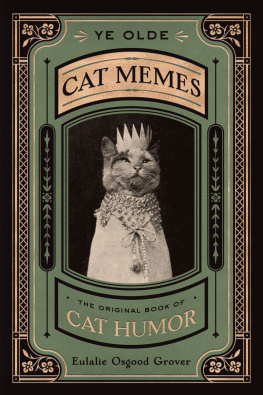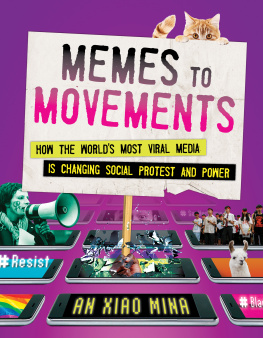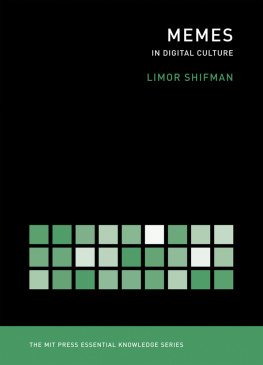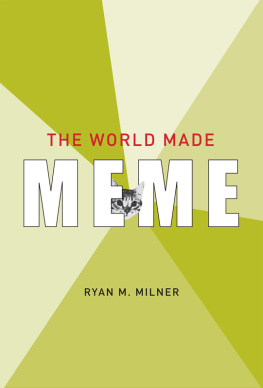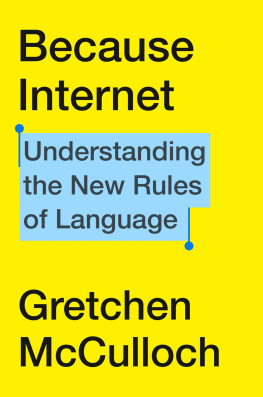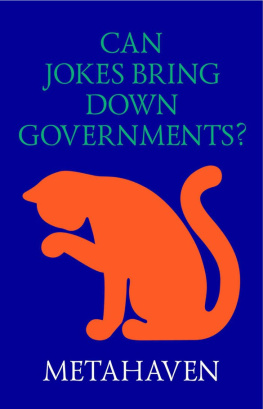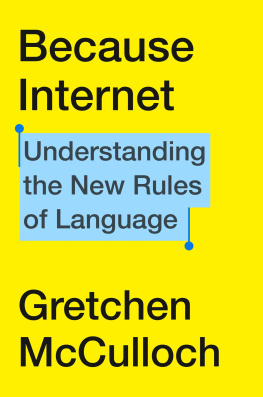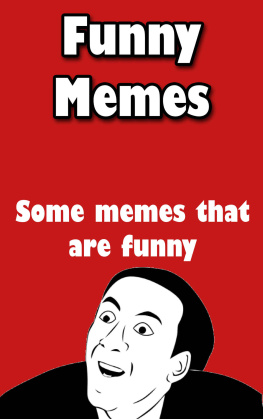Internet Memes and Society
This book provides a solid, encompassing definition of Internet memes, exploring both the common features of memes around the globe and their particular regional traits. It identifies and explains the roles that these viral texts play in Internet communication: cultural, social and political implications; significance for self-representation and identity formation; promotion of alternative opinion or trending interpretation; and subversive and resistant power in relation to professional media, propaganda, and traditional and digital political campaigning. It also offers unique comparative case studies of Internet memes in Russia and the US.
Anastasia Denisova is Lecturer in Journalism at the Communication and Media Research Institute at the University of Westminster, UK.
Routledge Advances in Internationalizing Media Studies
Edited by Daya Thussu, University of Westminster
18 Everyday Media Culture in Africa
Audiences and Users
Edited by Wendy Willems and Winston Mano
19 Children and Media in India
Narratives of Class, Agency and Social Change
Shakuntala Banaji
20 Advancing Comparative Media and Communication Research
Edited by Joseph M. Chan and Francis L.F. Lee
21 Childcare Workers, Global Migration and Digital Media
Youna Kim
22 Media Imperialism in India and Pakistan
Farooq Sulehria
23 Global Convergence Cultures
Transmedia Earth
Edited by Matthew Freeman and William Proctor
24 The International Photojournalism Industry
Cultural Production and the Making and Selling of News Pictures
Jonathan Ilan
25 Internet Memes and Society
Social, Cultural, and Political Contexts
Anastasia Denisova
For more information about this series, please visit: https://www.routledge.com
Internet Memes and Society
Social, Cultural, and Political Contexts
Anastasia Denisova
First published 2019
by Routledge
52 Vanderbilt Avenue, New York, NY 10017
and by Routledge
2 Park Square, Milton Park, Abingdon, Oxon OX14 4RN
Routledge is an imprint of the Taylor & Francis Group, an informa business
2019 Taylor & Francis
The right of Anastasia Denisova to be identified as author of this work has been asserted by her in accordance with sections 77 and 78 of the Copyright, Designs and Patents Act 1988.
All rights reserved. No part of this book may be reprinted or reproduced or utilised in any form or by any electronic, mechanical, or other means, now known or hereafter invented, including photocopying and recording, or in any information storage or retrieval system, without permission in writing from the publishers.
Trademark notice: Product or corporate names may be trademarks or registered trademarks, and are used only for identification and explanation without intent to infringe.
Library of Congress Cataloging-in-Publication Data
CIP data has been applied for.
ISBN: 978-1-138-60278-6 (hbk)
ISBN: 978-0-429-46940-4 (ebk)
Typeset in Sabon
by codeMantra
To my husband Paolo and my parents
Contents
This work owes to the support from my friends and colleagues at University of Westminster; I should specifically say thanks to Dr Anastasia Kavada for her deep knowledge and beautiful mind. I am grateful to all people who agreed to do the interviews for this book it has been a fascinating journey.
Before starting my academic career, I had been working as a journalist for over a decade in Russia. One of my favourite workplaces was the newsroom of the leading independent TV channel NTV. I was doing night and day shifts as the international news editor and reporter, but rarely felt tired thanks to the amazing drive of telling balanced news to the people. We were a great team of young professionals the editor-in-chief was barely in his late 20s. We gave all we had to the job, we would spend 40 minutes brainstorming a single opening line to a report. Creativity, amazing language and cultural references, when appropriate, cinematographic edits and thought-provoking explanations were as important to us as the objectivity of news reporting.
Then something happened. In mid-2000s, the Kremlin has turned an eye at free press. New management flew in, while the previous, liberal-minded administration was forced to leave the TV channel. The creatives were the first ones who fled our newsroom. One of the incredible things I have learned in that experience is that talented, enthusiastic people cannot breathe censorship when a journalist knows that they are not allowed to pronounce certain names or give air time to certain events, they not only curb the information they provide, but also curb their enthusiasm. And this is the dead end to creative, challenging journalism. I was not the most talented of the group, I was still in my early 20s, but I left soon after all the people I looked up to were no longer in the building. NTV channel is still out there, it looks very different now, and the quality of the news is incomparable to the golden era I was lucky to witness and contribute to.
Frustrated and disillusioned, I was then drawn to the new stems of creativity that came from the place I expected the least political protest. Creativity cannot be contained for long it found an outburst in the resistance. In Russia known for the passive, conformist population, something has changed in the early 2010s. Thousands of people went to the streets of major cities to express their rage at the corrupt elections. They organised via social networks, where they published stories and memes to unite the like-minded crowds they even printed memes on the placards that they took to the squares!
Now, almost ten years later, it has become clear that memes are present, impactful and here to stay, not only in Russia, of course, but all over the world the examples ranging from Azerbaijan to the US illustrate that these instantly shareable, humorous bits of information and opinion play a significant role in modern, digital politics. This book covers the development of the concept of memes, its role in society and politics, as well as most recent investigations in the impact of memes on society in the Russian Crimean annexation in 2014 and the US presidential election in 2016. It offers an innovative vision of the concept, format and roles of memes. Importantly, this work addresses the gap in the research on memes in both Western and non-Western countries.
The book examines Internet memes as one phenomenon of digital communication. Having derived from the emoticons and geeky jokes from online forums, they have developed into significant means of information, interaction and political deliberation in the 2010s. Nowadays, millions of users communicate information, opinion and emotions through this peculiar vehicle of self-expression. This book builds upon the existing definitions, offers new nuances and finally provides a complete working conceptualisation of memes for media studies.


